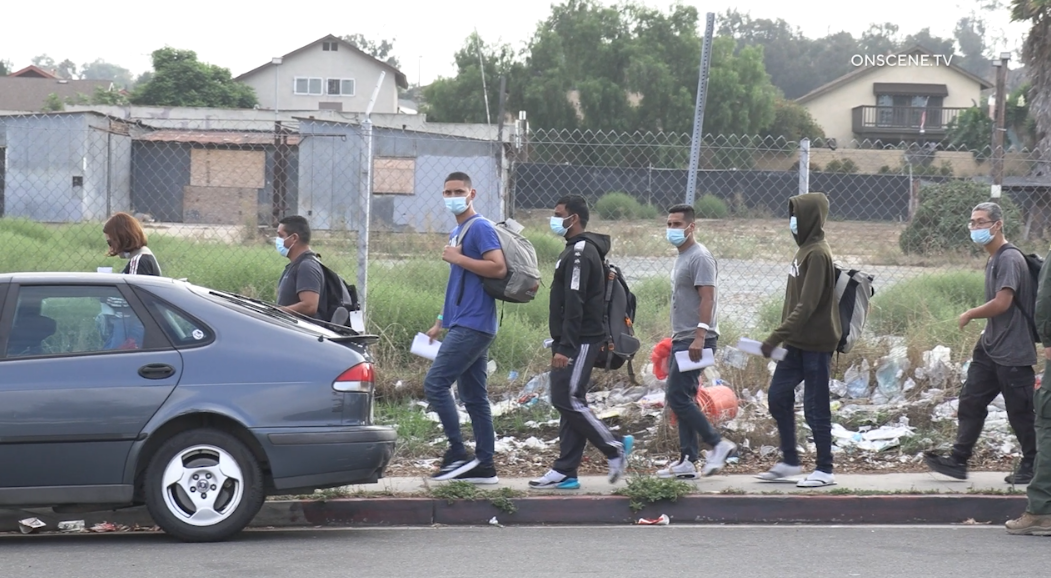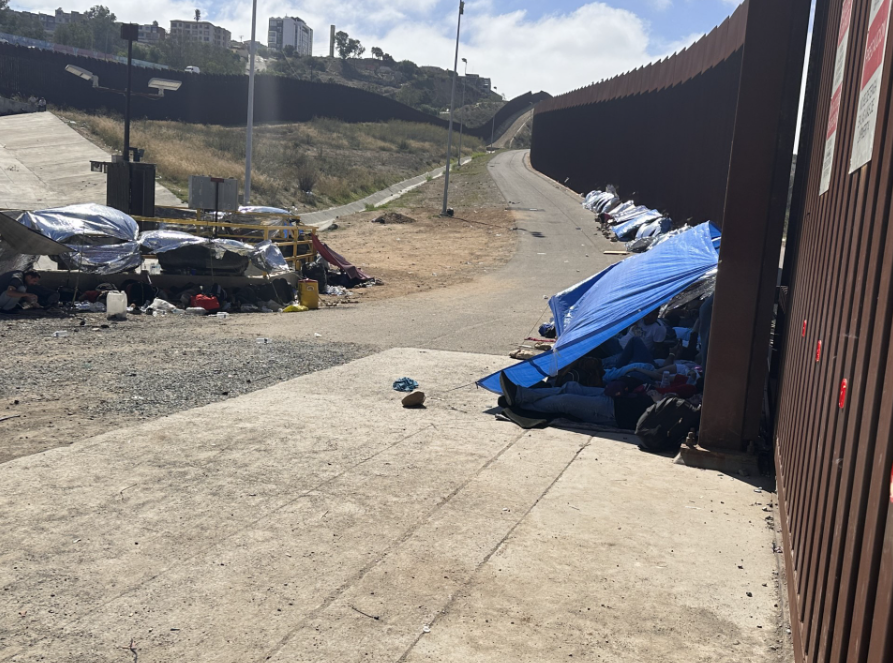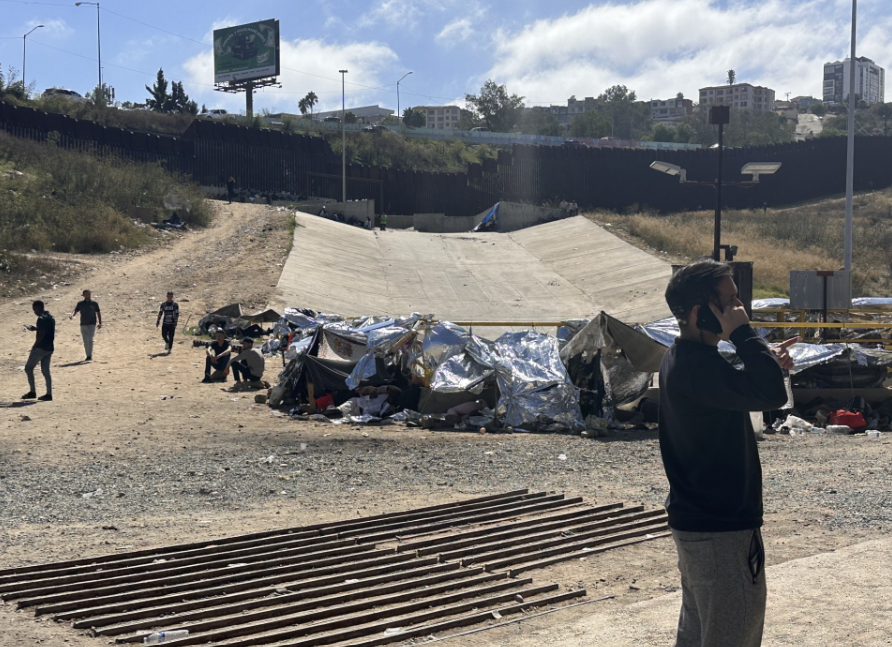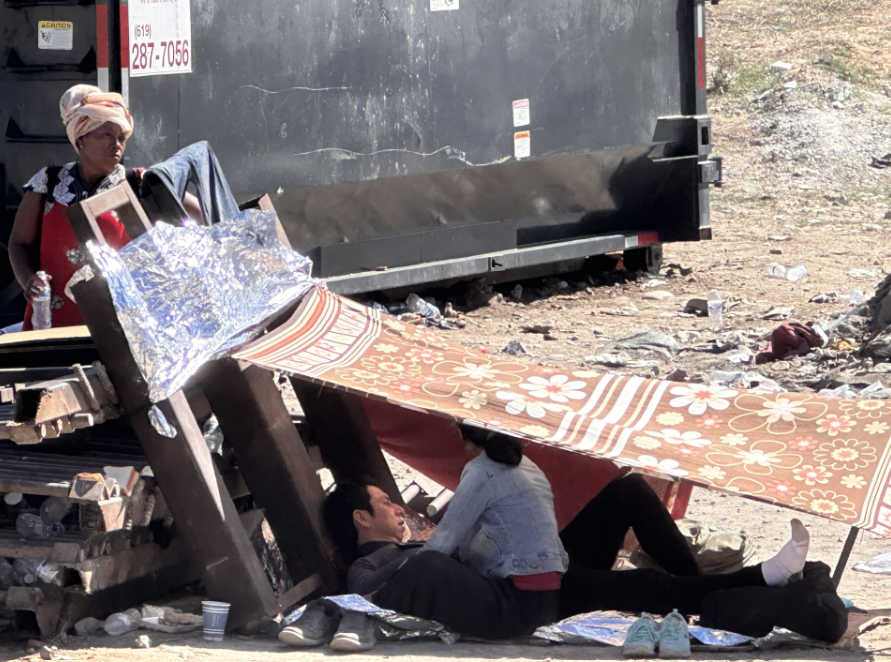SAN DIEGO (Border Report) — Three white buses with no insignia or logos pulled up along 30th Street across from the Iris Avenue Trolley Station in South San Diego. Within minutes, hundreds of men and women started to unload.
One vendor in the area, who said he normally sells burritos and sodas to trolley commuters, stated this is not the first time he has seen this happen this week.
The people coming off the buses were all asylum seekers recently processed at Border Patrol stations in San Diego.
A few Border Patrol agents stood outside and made sure everyone disembarked in an orderly and safe fashion.
Within minutes, migrants scattered, although some did hang around trying to figure out where they were and how to leave the area.
Border Report encountered a small group of migrants from China, three men from the Republic of Georgia and two ladies from Pakistan.
The migrants from Georgia inquired about “taxi, taxi, taxi?”


Another migrant innocently asked an agent for help.

“Is it OK if I go to Chicago, no arrest? ” asked the unidentified migrant.
“You are free to go,” replied one of the agents.
We’ve reached out to the Border Patrol about why this is happening and why it is choosing to release migrants onto the streets of San Diego.
We were told CBP releases non-citizens to nongovernmental organizations and other sites in border communities in coordination with state and local partners — that CBP works diligently to ensure releases are conducted in a safe manner, and that all non-citizens released from custody are provided essential support upon release and may access transportation to continue to their destinations.
Since late last week, CBP has seen a surge in the San Diego Sector.
Suddenly an area in the middle of two border barriers, between Tijuana and San Diego, has become a temporary home for hundreds of migrants.



In late April and early May, before the end of Title 42, similar scenes played out with migrants camping out waiting for agents to pick them while relying on the kindness and generosity of volunteers to feed them.
“We’re looking at maybe 250 to 300 people in this area,” said Pedro Rios with the American Friends Service Committee. “There are other pockets where people will gather, we can only attend to this area, we don’t have access to other areas, so we don’t know many people might be at some of the other locations.”
On this day, Rios and the others were handing out bottles of water, cups of warm oatmeal, rolls and granola bars.
“There are various ways migrants are coming into this location. All the smuggling networks are involved. Some of them are climbing over the border wall, some of them are crossing through the canal that’s very close to here in San Ysidro. Once they get into U.S. soil, then it’s the responsibility of the U.S. government to respond to their request for asylum.”
Off camera, one Border Patrol agent said between Tuesday night and Wednesday morning, they estimate 450 migrants crossed the border and were waiting to be transported to CBP facilities to get processed.
Migrants who are released are given a court date and asked to appear before a judge to begin their formal asylum cases.
It is common for these migrants to have sponsors in the U.S. who agree to house and provide necessities for the asylum seekers until their cases are decided.
This post was originally published on this site be sure to check out more of their content.








